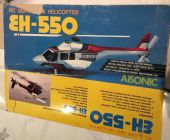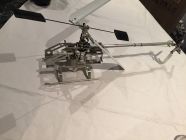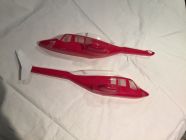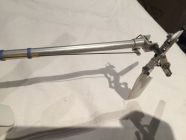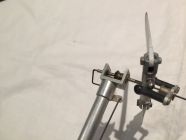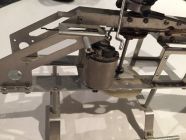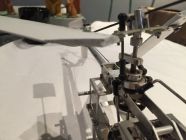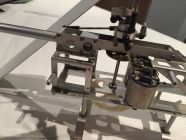
AiSONIC
Another established Japanese company that 'dabbled' with RC helicopters in the 80's and being involved with electronic components and equipment, manufacturing electric helicopters and gyro's was the logical step to take. Compared to the heavy design only a few years earlier of the Ishimasa Skylark their models were more advanced with a high build quality and the design well considered (though not the 'first' as they claimed at the time); unfortunately the available motor and battery technology had still not developed enough and so the model had barely adequate performance and duration, as per the Skylark, they would not sell in any great numbers.
As an historical point it would take another 10 years and require the development of industrial plastic mouldings and Carbon fibre components for small electric helicopters to achieve a reasonable level of success. Additionally, it required the introduction of Lithium battery technology before the small size electric helicopters (i.e. Protech Zoom) would truly come of age.
Aisonic Master EH
First produced in 1985 and was of pod and boom format being driven by a single 280 size (Mini-trix long) brushed electric motor with 10:1:4 ration for main / tail rotors and supplied from an 8.4V 600 MAh NiCad battery. Similarly to the earlier Ishimasa Skylark, power could also be supplied by umbilical cable from a remote battery. The chassis was constructed from aluminium, the tail was wire driven and the main rotor was a basic fixed pitch 'Hiller' design with a 'teeter' head and diameter of 500mm; all up weight (including battery) was 500 gram. Performance was adequate but duration not particularly long when using the 'onboard' battery.
AiSONIC EH-550
 |
Specification:
|
||||||||||||
 Manual |
|
The single motor had proved to be quite lack lustre and in 1987, to increase performance, rather than redesign to take single bigger motor; two standard size 280 motors were used as luckily, there was adequate room to mount these across the chassis. The result was a modest increase in weight of 10% but a larger increase in power of almost 50% resulting in a dramatically improved performance however, as the same battery was used as the master EH (8.4v 600 mAh Ni-mh) the usable duration was only about 4 minutes. The model was also available with optional scale bodies, these were JetRanger, Bell_222 and the popular TV series helicopter Airwolf. The Aisonic range was advertised under the distribution company of World Creative Products (who had links to TSK) however, it does not appear that they actively pursued sales in the UK.
AiSONIC EH-650
 |
Specification:
|
In 1990 the model was enlarged slightly in order to utilise a larger and more powerful 380 class motor. Although keeping the same basic layout the chassis was completely redesigned and a new type rotor head was fitted (collective pitch?) with larger blades giving a diameter of 520mm and a further weight increase to 650 gram. The motor was a PM-30 'brushed 380' with reduction ratio now at 8.7:1:4 however the same size of battery was still used resulting in a reduced duration to 3 minutes though there was the umbilical option to allow extended flying times for training purposes. The model was also fitted with a mini (rate) gyro which given the increased power of the motor was needed to keep the tail under control. The disc loading and rotor speed was higher than the 550 which gave the helicopter a more positive feel to the controls and thus it was a more practical proposition as an 'all rounder'.
Aisonic EH-650 (Long Rotor) JetRanger
As an option an extended tail boom with longer drive shaft and control rod could be fitted that allowed the use of longer blades giving a rotor disc diameter of 620mm. This reduced disc loading gave a more sport like performance and actually increased endurance for the canopy version plus allowing the fitting of a JetRanger body.
Honey-Bee
In 1988 the Infinite Trading Co of Hong Kong marketed an electric helicopter which was a revised Aisonic EH-550 but now had a number of the original metal parts replaced with moulded parts parts thereby reducing the model weight.
This model was actively pursued in the UK resulting in it being available from a UK dealer in 1989, not quite sure where the MkII bit came from as it looks the same as the original. However, it did not catch on as the UK market of the time was well and truly entrenched in glow powered helicopters and 'indoor' flying had not even been considered.
As you can see the chassis is basically the same as the EH-550 though not sure on the tail drive system, it looks to be wire but cannot see a drive cog; needs more info.....

%201988_small.jpg)
%201988_small.jpg)



